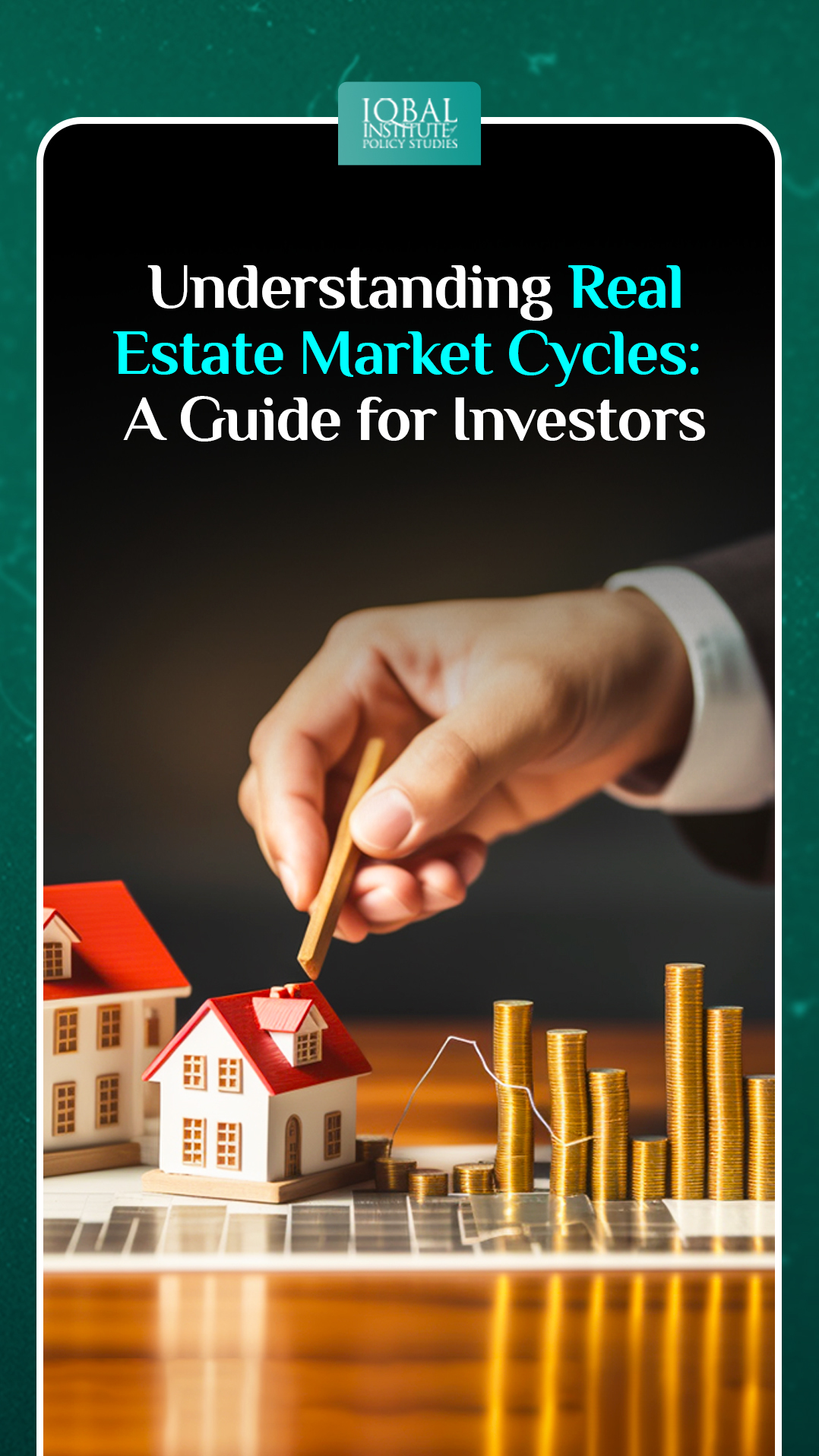The real estate market is a dynamic and ever-changing landscape, influenced by a variety of factors such as economic conditions, supply and demand dynamics, and investor sentiment. Understanding the cycles that occur within the real estate market is crucial for investors looking to make informed decisions and maximize their returns. In this comprehensive guide, we will delve into the intricacies of real estate market cycles, exploring their different phases, key indicators, and strategies that can help investors navigate and thrive in each phase. Real estate market cycles in Pakistan follow similar patterns to those observed in other countries. However, it is important to note that the specific dynamics and factors influencing these cycles can vary based on the country’s unique economic, political, and social conditions. Here is an overview of the real estate market cycles in Pakistan:
Expansion Phase
The expansion phase is characterized by robust economic conditions and a growing real estate market. During this phase, there is a high demand for properties, leading to low vacancy rates, rising rents, and increasing property values. Investors should focus on identifying emerging markets and neighborhoods, as well as properties with strong growth potential. Conducting thorough market research, analyzing demographic trends, and considering factors such as infrastructure development and job growth are vital during this phase. By investing in properties that align with the upward trajectory of the market, investors can position themselves for long-term appreciation and potential rental income growth. During the expansion phase, Pakistan experiences economic growth, increased urbanization, and rising demand for real estate. This phase is characterized by low vacancy rates, rising property prices, and robust construction activity. Factors such as population growth, urban migration, infrastructure development, and government policies promoting the real estate sector contribute to the expansion phase. Investors may find opportunities in emerging markets and locations with high growth potential.
Peak Phase
The peak phase represents the height of the real estate market cycle. Property prices and demand reach their peak levels, signaling a potential slowdown in growth. During this phase, investors need to exercise caution and carefully evaluate their investment strategies. It is important to monitor market conditions, as increased speculation and a potential oversupply of properties can lead to a market correction. Strategies for investors in the peak phase may involve selling high-value properties, diversifying their portfolios, and focusing on income-producing assets with stable cash flow. Risk management becomes crucial, and staying updated with market trends and indicators is essential to make informed decisions. The peak phase represents the pinnacle of the real estate market cycle in Pakistan. Property prices reach their highest point, and demand starts to slow down. Speculation and excessive supply can contribute to the peak phase. Economic factors, regulatory changes, and market sentiment play a significant role in determining the duration and intensity of this phase. During this period, investors need to exercise caution, conduct thorough market research, and consider diversifying their portfolios to mitigate potential risks.
Contraction Phase
Following the peak phase, the real estate market in Pakistan enters a contraction phase characterized by declining property prices and reduced demand. Economic slowdowns, policy changes, and tightening credit conditions can contribute to this phase. Property sales may decline, and distressed properties may enter the market. Investors who have anticipated the market downturn can capitalize on opportunities to purchase properties at discounted prices. Strategies for investors in the contraction phase may involve acquiring distressed assets, negotiating favorable deals, and focusing on cash flow rather than appreciation. Thorough due diligence, careful risk assessment, and the ability to identify properties with long-term potential are critical during this phase.
Trough Phase
The trough phase represents the bottom of the real estate market cycle. Property prices stabilize, and signs of recovery begin to emerge. This phase presents opportunities for investors with a long-term perspective to acquire undervalued properties that have the potential for future growth. Strategies for investors in the trough phase may include value investing, strategic renovations, and identifying emerging markets or neighborhoods poised for revitalization. Patience, thorough analysis, and the ability to identify potential market upturns are key for successful investments during this phase.
Recovery Phase
In the recovery phase, the real estate market in Pakistan experiences an upswing. Property prices start to rise, and demand increases. Economic growth, government policies, and improved investor confidence contribute to the recovery phase. During this phase, investors can focus on value-added opportunities, property development, and market sectors showing signs of strong growth. Conducting comprehensive market analysis, monitoring economic indicators, and staying informed about trends in the real estate sector are essential to maximize returns during the recovery phase. Being adaptable to changing market dynamics and adjusting investment strategies accordingly can position investors for success as the market continues to recover.
Conclusion
Understanding real estate market cycles is an indispensable aspect of successful real estate investing. By recognizing the different phases – expansion, peak, contraction, trough, and recovery – investors can adapt their strategies, capitalize on market conditions, and mitigate risks.
During the expansion phase, investors can capitalize on the rising demand for real estate, emerging markets, and locations with growth potential. However, caution is advised during the peak phase, as market speculation and excessive supply may lead to potential risks. In the contraction phase, opportunities arise to acquire undervalued properties, provided investors conduct thorough due diligence and risk assessment.
The trough phase offers potential for long-term investments, as property prices stabilize and signs of recovery emerge. Investors with a keen eye can identify properties with growth potential and position themselves for future appreciation. Finally, the recovery phase signifies a rebound in the market, with rising prices and increased demand. Investors can focus on value-added opportunities and sectors showing strong growth.
It is important to note that the duration and intensity of each phase can vary, and the market cycles can be influenced by external factors such as political stability, regulatory changes, and global economic conditions. Real estate investors in Pakistan should stay informed, conduct thorough research, and seek professional advice to navigate the market cycles effectively and make informed investment decisions. With a comprehensive understanding of market cycles, investors can position themselves for long-term success, unlock the full potential of their real estate investments, and achieve their financial goals.
This article is written by Maha Nazami. Maha is a research analyst at the Iqbal Institute of Policy Studies (IIPS).



Leave a Reply